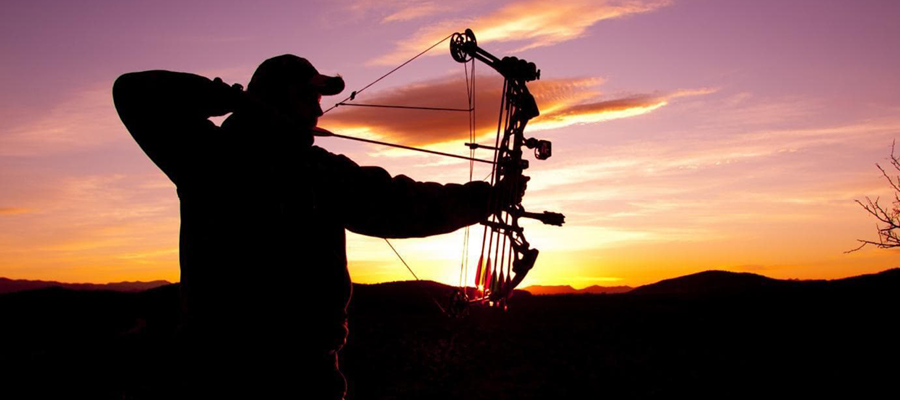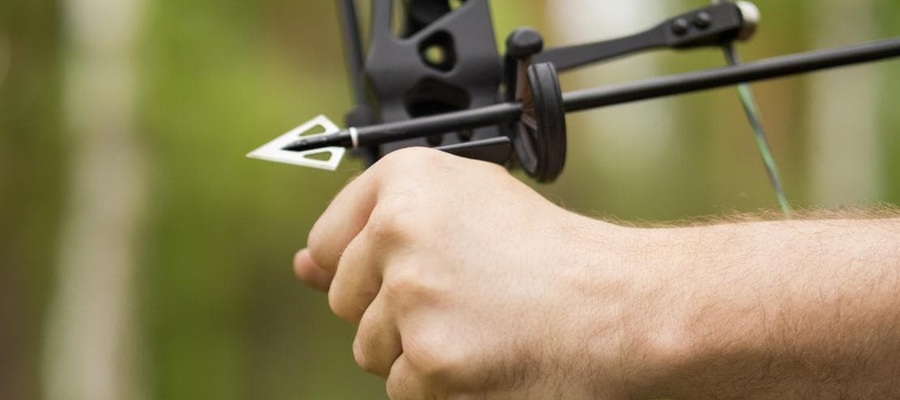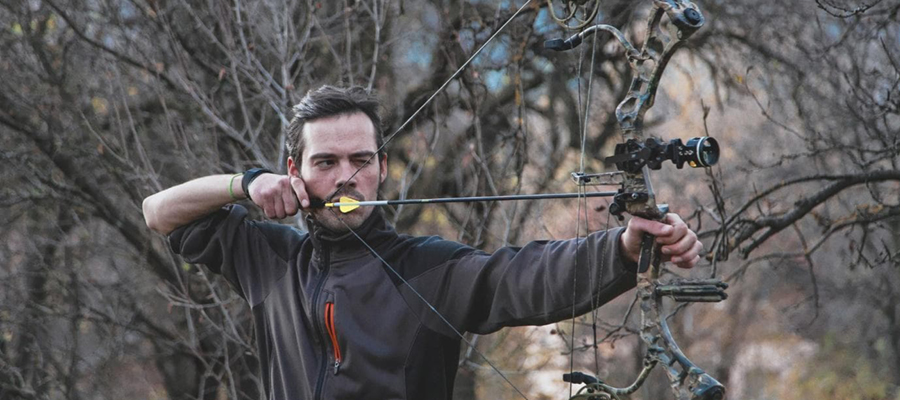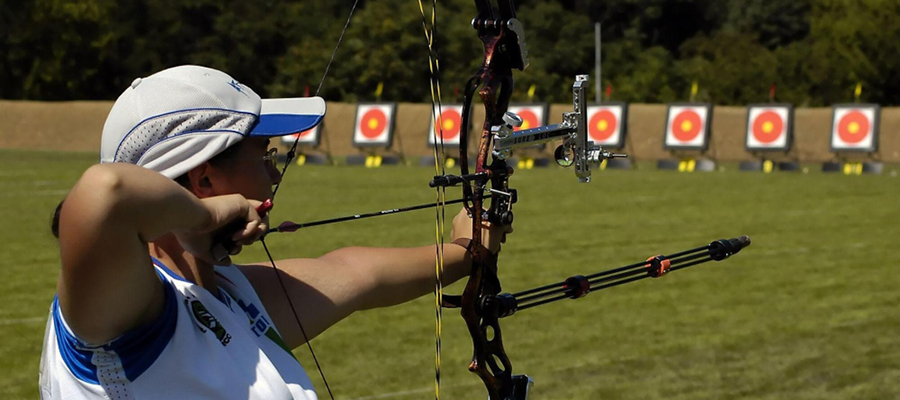In order to use this website you need to accept the use of Cookies , our Privacy Policy , and our Terms and Conditions.

THE MAJOR ADVANTAGES OF A COMPOUND BOW
If you have been considering trying your hand at archery, target archery, or hunting and are curious about the benefits of a compound bow, this brief guide is for you. Today, we will have a look at the differences between compound bows and other popular styles of bows. Additionally, we will examine a few things to look out for when purchasing one of these modern bows and offer a few tips and tricks to get the most from them.
For some of the most effective and accurate compound and recurve bows on the market, look no further than Futurama. We have compiled an impressive catalogue of high-quality archery equipment – an ideal location for beginners and veterans alike. So, without delay, let’s delve into the ins and outs of the compound bow.

![]()
![]() WHICH IS BETTER: RECURVE OR COMPOUND BOW
WHICH IS BETTER: RECURVE OR COMPOUND BOW
Compound bows and recurve, or traditional bows, are different in a few notable ways. The more modern compound bows use an array of cables and pulleys, which bend the limbs of the bow; this enables you as the shooter to produce significantly more power, while also being more accurate from greater distances without relying as heavily on physical strength. This is why these bows are much more common in a competition setting, and they have the added bonus of being more accessible to those who cannot handle bows with a heftier draw weight.
WHAT IS A COMPOUND BOW USED FOR?
Compound bows can do almost anything a recurve bow can do, perhaps with the exception of speed shooting. Generally, they are used by hunters, archery enthusiasts, in field archery, and in target archery competitions. They excel in these areas as a result of the two-pulley designs which facilitates remarkable precision.
![]()
![]() WHAT IS THE DIFFERENCE BETWEEN A COMPOUND BOW AND A BOW?
WHAT IS THE DIFFERENCE BETWEEN A COMPOUND BOW AND A BOW?
Besides the addition of pulleys, cams, and cables, and the aesthetic differences between compound and traditional bows, the largest difference is the mechanical advantage. While you still need to pull back the draw weight of compound bows, the cams reach a “let-off” point where the weight becomes far easier to hold, making aiming substantially easier without the strain of holding back over 30kg.
On the flip side, with a recurve or longbow, you will need to hold the full weight of the draw, making accurate shooting much more challenging. This is perhaps the most notable upside of compound bows in comparison to their more-traditional counterparts.

SHOULD A BEGINNER GET A RECURVE OR COMPOUND BOW?
Seasoned archers often recommend starting out with a recurve bow, for two reasons. Firstly, as we touched on, these bows are more challenging to use, but this can be beneficial for those getting into archery. Recurve bows should assist you in training the correct muscles and getting the movements down pat, which will serve you in the long run.
Secondly, once you do move across to compound alternatives, you will be able to realise the full potential of these bows comparatively quickly, as you have already worked on your draw strength and accuracy.
![]()
![]() BEST COMPOUND BOW: FUTURAMA ONLINE STORE
BEST COMPOUND BOW: FUTURAMA ONLINE STORE
Now that you have been armed with some useful information about the compound bow, let’s get into three high-quality offerings from our Futurama online store.
MAN KUNG MK-CB30 COMPOUND BOW – 29LBS
For those of you looking for an incredible value-for-money bow, the ![]() Man Kung MK-CB30
Man Kung MK-CB30![]() is certainly worth your consideration. At only R1,819.00, you get a lot of bang for your buck, featuring an aluminium riser, compression moulded fibreglass limbs, and a comparatively low draw weight of 29 lbs – perfect for beginner marksmen. Despite the low draw weight, the bow can still achieve a velocity of 129 fps, which is more than enough for target shooting and hunting small game.
is certainly worth your consideration. At only R1,819.00, you get a lot of bang for your buck, featuring an aluminium riser, compression moulded fibreglass limbs, and a comparatively low draw weight of 29 lbs – perfect for beginner marksmen. Despite the low draw weight, the bow can still achieve a velocity of 129 fps, which is more than enough for target shooting and hunting small game.
MAN KUNG AURORA MK-CB50 COMPOUND BOW – 55LBS
For those who are familiar with bows, you will know that Man Kung is one of the most well-regarded and trustworthy brands in the industry – the ![]() Aurora MK-CB50
Aurora MK-CB50![]() only adds to their already impressive selection. This bow also comes standard with an aluminium riser, compression moulded fibreglass limbs, and a surprisingly lightweight construction. The main difference between this bow and the last is that it features an adjustable draw weight between 30 and 55 lbs, resulting in an impressive arrow velocity of up to 296 fps! The bow can accommodate archers of smaller size due to its compact nature and is designed for right-handed use.
only adds to their already impressive selection. This bow also comes standard with an aluminium riser, compression moulded fibreglass limbs, and a surprisingly lightweight construction. The main difference between this bow and the last is that it features an adjustable draw weight between 30 and 55 lbs, resulting in an impressive arrow velocity of up to 296 fps! The bow can accommodate archers of smaller size due to its compact nature and is designed for right-handed use.
MAN KUNG MK-CB50BK
This bow is a little pricier than the last two we have spoken about, but it makes up for it in quality and additional features. The ![]() MK-CB50BK bow
MK-CB50BK bow![]() can be used by a wide variety of individuals, due to the adjustable draw length and weight – anyone between 120 to 185 cm. Included in the set is a whisker biscuit arrow rest, two aluminium arrows, a professional pin sight, a peep sight, and more. It has been made to last and is remarkably durable. If you have been searching for a versatile compound bow, it doesn’t get much better than this offering from Man Kung.
can be used by a wide variety of individuals, due to the adjustable draw length and weight – anyone between 120 to 185 cm. Included in the set is a whisker biscuit arrow rest, two aluminium arrows, a professional pin sight, a peep sight, and more. It has been made to last and is remarkably durable. If you have been searching for a versatile compound bow, it doesn’t get much better than this offering from Man Kung.
![]()
![]() COMPOUND BOW HUNTING: WHY IT WORKS
COMPOUND BOW HUNTING: WHY IT WORKS
Let’s dive into the characteristics of these modern bows and explain why they are so commonly utilised by hunters and target shooters. Many individuals still prefer the challenge of hunting with a bow, however, there are a number of reasons why most hunters nowadays opt for compound bows – let’s get into them.
1. GREATLY REDUCED DRAW WEIGHT
As we mentioned, the let-off mechanism of these bows is hugely advantageous. Once the bow is fully drawn, the cams click into a locked position, retaining all the pent-up energy from the limbs, while reducing the amount of physical effort required to hold the bow at full draw. If you do not have much experience with recurve or longbows, take our word for it – it is extremely tough to hold 30kgs for extended periods of time, and it can quite easily tire you out if you do manage it to begin with.
This let-off mechanism positively impacts many integral elements of shooting, including a reduction in muscle fatigue, allowing you to shoot for longer periods without tiring. This not only assists with endurance, however, as it also affords you more time at full draw to aim precisely, greatly increasing the chances of you hitting the mark. As you can imagine, this makes a massive difference when hunting and target shooting, enabling you to be more accurate and effective.
2. ARROW VELOCITY
The pulleys, cams, and cables serve multiple purposes beyond the revolutionary “let-off” mechanism. Another benefit of this advanced levering system is that the bow itself is capable of storing significantly more energy than recurve bows. This pent-up energy results in a radical improvement in arrow speed and velocity, meaning that your arrow will fly at a flatter trajectory.
This provides a drastic increase in precision, as arrow drop is notoriously challenging to counteract, and it is a common difficulty experienced by those who prefer traditional bows. Essentially, the higher the velocity of the arrow, the better the stability will be over longer distances – making accurate shooting simpler than ever before.

3. THEY ARE LIGHTWEIGHT AND COMPARATIVELY SMALL
If you wanted to achieve a similar arrow velocity from a traditional bow, you would more than likely need to opt for a longbow. One of the downsides of these bows is that they can be massive, sometimes reaching almost 2 metres! However, a compound bow is considerably more compact and is usually manufactured using lightweight materials.
This makes these bows substantially easier to transport, especially if you are thinking about embarking on a lengthy expedition that might require traversing through tough terrain. The other benefit of the compact nature of compound bows is that you are able to manoeuvre through smaller spaces, like dense forests and gaps between branches or rocks. Of course, this makes these bows much more practical and versatile, as they are capable of offering the same, or more, velocity and power while being easier to transport than their traditional counterparts.
4. NOISE REDUCTION CAPABILITIES
This particular feature can be crucial when hunting, as stealth and keeping a low profile can mean the difference between failure and success on any given expedition. Not all compound bows include this technology, but those that do, use it to great effect. Certain changes to essential mechanisms can greatly reduce the amount of noise the bow produces when shooting, bringing down the possibility of scaring one’s targets and jeopardising the success of the hunt.

CHOOSING YOUR IDEAL BOW
It always helps to be well-informed before going out and purchasing your own equipment, as ill-fitting or low-quality bows can severely impact your enjoyment and overall shooting success. One of the first things to think about is draw length, which is often linked to height or the length of your arms. Draw length refers to the distance from the string to the furthest part of your grip when in full draw – it is an essential consideration when trying to find the perfect bow for your purposes.
You can quite simply measure your own draw length by creating a “T” shape with your body; do this by stretching both arms out to each side and standing up straight. Then, have someone else measure from the tip of one middle finger to the other, and this will provide you with your wingspan. Once you have this, divide the number by 2.5 and you should have your required draw length, it’s as easy as that.
Equally crucial is the draw weight, which refers to the weight that you will need to pull back to get the bow into a fully drawn position. While it is true that the heavier the draw weight, the more velocity you will achieve when firing the arrow, it is not ideal for beginners to start with a heavier bow – it could result in shakiness and possibly even injury.
A fantastic method of testing for the correct draw weight is by holding a bow with a comparable weight for between 20 – 30 seconds. If you can manage this without shaking or becoming tired, then it is an acceptable draw weight for you. Over time, your strength and shooting muscles will develop, allowing for greater draw weights, so there is no need to rush the process and choose a bow that isn’t right for you.
The last consideration we will cover today is bow length, which is the measure of your bow from axle to axle. Longer bows are typically easier to handle and are often more forgiving for beginners, but shorter bows are more mobile and allow for shooting in tight spaces. At the end of the day, this will come down to personal preference and the deciding factor is the length you feel most comfortable shooting with.
Here are a few more factors that are worth your consideration:
●Bow weight
●Noise and speed
●Brace height
●Cams
●Riser

